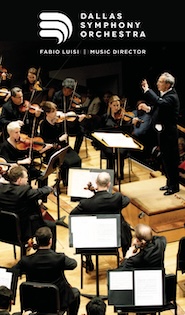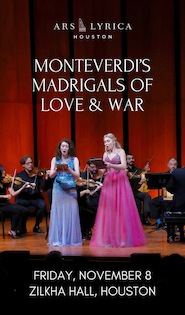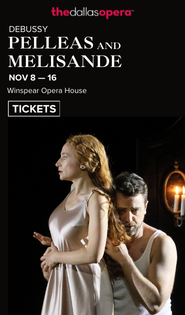Dallas Opera’s endearing “Hansel and Gretel” is a treat for the eyes and, more fitfully, the ears
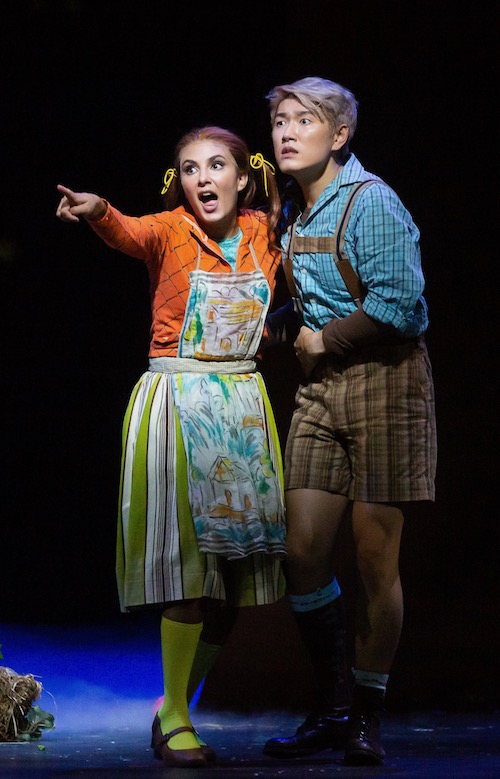
With most good fairy tales comes a useful vagueness of time and place that lets the audience imagine itself inside the narrative, no matter how fanciful. Los Angeles Opera’s production of Engelbert Humperdinck’s beloved Hansel and Gretel fills this strategic “once-upon-a” space to the brim — with flamboyantly imaginative staging and design, ornate puppetry, vibrant sets and playful costuming.
It was no surprise, then, to find a sold-out Winspear Opera House with more kids than usual in the seats on Friday night for the Dallas Opera’s opening performance of the work.
Humperdinck’s adaptation of the Brothers Grimm’s popular fairytale, which he conceived in 1891-1892 with his sister Adelheid Wette, softens the dark and gruesome edges of the original with the addition of protective mythical figures and the omission of an infanticidal mother. Add the sing-songy score, and Douglas Fitch’s direction, sets and costumes, and everything comes together as a light-hearted feast for the senses of young and old alike.
The air of childlike wonder might explain, if not entirely excuse, stage performances that seemed to downplay vocal virtuosity in favor of an inflated (literally, at one point) dramatization — each character is a caricature defined more by exaggerated gestures and expressions than the quality of the singing. But the undeniable appeal of the Dallas Opera’s overall presentation makes the shortcomings easier to absorb.
Starring in the title roles, countertenor Kangmin Justin Kim, in his Dallas Opera debut, and soprano Elena Villalòn brought consistency and energy to their portrayals of the young brother-sister duo. Villalòn, at once spunky and fretful, sang with a rich elasticity through her mid-range. Her gleamingly silver highs, however, often failed to reach over the pit and were lost under the orchestra.
Likewise, Kim’s low end seldom possessed the proper weight to break through the accompaniment with clarity without him having to reach into his chest register. But his higher range was beautiful and bright, with a powerful and present spin on the fortes.
The closing duet of Act I, the famous “Evening Blessing,” was far and away the musical highlight of the night. Kim and Villaón achieved a colorful and tender blend that captured the young heroes’ fragility and mutual devotion. The safeguarding hymnal provides a beautiful sonic backdrop against which the procession of Jim Henson-esque spirits of the forest pantomime their watchful ritual over the wayward pair.
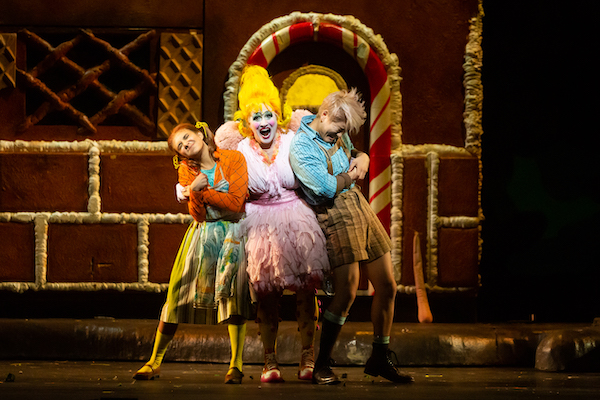
Here, the visual appeal of Fitch’s production was most immediate. The artistic complexity of these dreamlike creatures encompassed technicolor feathers and furs, otherworldly shapes and physiques, each with a pair (or two) of bright glowing eyes. The set was mobile, like pieces of a psychedelic puzzle, turning and unfolding to reveal layers of scenery, from the mushroom forest to the eerie glade wherein the witch resides.
Soprano Patricia Racette, doubling as The Mother and The Witch, was supremely more engaging as the latter than the former. Her upstage position, as with the rest of the cast, resulted in several issues with dynamics and diction. First appearing as The Mother, she was straightforward and unassuming in delivery; while her manipulation of color, register and style as The Witch in the opera’s second half yielded a farcically unsettling character that the audience loved to hate.
Cheeky dance movements — along with gaudy makeup designed by David Zimmerman — paired well with Racette switching between operatic and musical theatre vocal stylings. Her flight scene in particular was a fun and formidable showcase of her full-bodied mid-range.
Baritone Mark Delavan was the comedic champion of the evening in the role of The Father — a lackadaisical drunkard with a lovable air of devotion to family. His was the only instrument that consistently pierced the wall of sound, bringing with it a clarity in diction and a warmth that was as stern as it was endearing.
Mezzo-soprano Lindsay Metzger as the Sandman and soprano Gabrielle Gilliam as the Dew Fairy served up solid cameos, putting the pair of protagonists to sleep at the end of Act I and waking them to start Act II. Both, however, were positioned far upstage, with a corresponding loss of sound as they crossed from one side to the other delivering their sentimental arias.
Conductor Emmanuel Villaume directed the Dallas Opera Orchestra ably through the subtleties and nuances of Humperdinck’s work. There were a few distracting moments of misalignment in time and rhythm between the orchestra and the vocalists, but the collective ensemble never lost its feel for the whimsy and drama of the work. And in the closing scene, the children of the Greater Dallas Choral Society — flanking the stage in house boxes — sang with a well-balanced, unwavering blend to bring the tale to a rapturous close.
Though less impressive musically than it could be, this production is clear in its intent to prioritize the magic and fancy of opera as a storytelling tool, and an art form that can still delight anyone from seven to 70. The Dallas Opera’s performance Friday achieved exactly that.
Hansel and Gretel will be repeated 2 p.m. Sunday, and 7:30 p.m. Wednesday and Saturday. dallasopera.org
